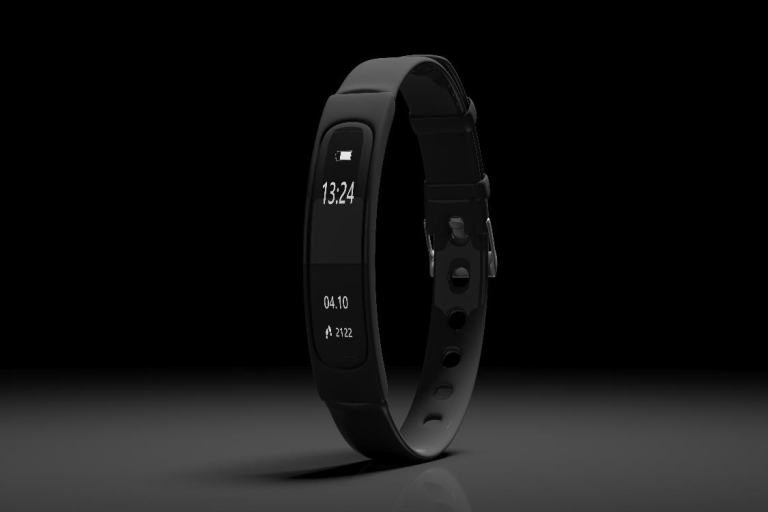Wearable technology has seen exponential growth in recent years, revolutionizing how we interact with technology, monitor our health, and stay connected on the go. From fitness trackers and smartwatches to augmented reality (AR) glasses and health monitoring devices, the demand for compact, high-performance batteries to power these devices is on the rise. One of the most popular solutions for powering wearable technology is the lithium polymer (LiPo) battery.
In this article, we’ll explore how lithium polymer batteries are transforming wearable devices, discussing their advantages, challenges, and why they have become the preferred choice for designers and manufacturers.

What Are Lithium Polymer Batteries?
Lithium polymer batteries are a type of rechargeable battery that uses a polymer electrolyte instead of the liquid or gel electrolyte found in traditional lithium-ion batteries. This design allows for more flexibility and enables the batteries to be thinner and lighter while maintaining a high energy density.
LiPo batteries share many similarities with their lithium-ion counterparts in terms of performance, but their unique construction makes them particularly well-suited for applications where size, weight, and form factor are critical considerations — such as wearable technology.
Key Advantages of Lithium Polymer Batteries in Wearables
- Thin, Lightweight, and Flexible Design
One of the standout features of lithium polymer batteries is their flexibility in terms of size and shape. LiPo batteries can be made incredibly thin, which is essential for the compact designs of many modern wearable devices. Whether it’s a slim fitness tracker or a sleek smartwatch, these batteries fit seamlessly into the form factors required by designers.
Because they do not require a heavy metal casing, as in traditional lithium-ion batteries, lithium polymer batteries can be as thin as a few millimeters. This design flexibility allows wearable tech manufacturers to create devices that are not only functional but also comfortable and unobtrusive for daily wear.
Moreover, the flexibility of LiPo batteries also opens up new possibilities for wearable devices that conform to the body, like smart clothing or flexible medical patches, which would be impossible with more rigid battery designs.
- Higher Energy Density
Lithium polymer batteries, like their lithium-ion counterparts, have a high energy density, meaning they can store a significant amount of energy relative to their size and weight. This is crucial for wearable technology, as devices like smartwatches, fitness trackers, or even VR headsets need to be compact while providing enough battery life to ensure reliable performance throughout the day.
While the energy density of LiPo batteries is slightly lower than traditional lithium-ion batteries, advances in technology have minimized this gap, allowing LiPo batteries to offer sufficient power for many modern wearables.
This efficiency means that wearable tech manufacturers can create devices with longer battery life without compromising on design or performance. Users can enjoy extended use without constantly worrying about charging their devices.
- Safe and Stable Chemistry
LiPo batteries are generally considered to be safer than traditional lithium-ion batteries. While both technologies are inherently safe when used correctly, lithium polymer batteries are less prone to leakage or rupture in the event of physical damage. This is because LiPo batteries have a solid or semi-solid electrolyte rather than a liquid one, making them less volatile if punctured or exposed to extreme conditions.
In wearable technology, safety is a paramount concern, especially when the device is in constant contact with the skin or worn for long periods. With their stable chemistry and reduced risk of leakage, lithium polymer batteries offer a safer power solution for these applications.
- Fast Charging and High Efficiency
Lithium polymer batteries offer fast charging times, which is another significant benefit for wearable tech users who want to spend more time using their devices and less time waiting for them to charge. LiPo batteries can charge faster than many other rechargeable battery technologies, including traditional lithium-ion batteries. This is particularly useful for wearable devices, where users may only need to recharge during short periods of inactivity, such as overnight.
Moreover, LiPo batteries also offer high efficiency in energy conversion, meaning less energy is lost during charging and discharging. This efficiency leads to longer operational life per charge cycle, which is crucial for portable, battery-powered wearable devices.
- Improved Performance in Extreme Conditions
Wearable devices are often used in challenging environments—whether it’s running in hot weather, cycling in the rain, or working out in cold temperatures. Lithium polymer batteries have proven to perform well across a wide range of temperatures and environmental conditions, making them ideal for wearable technology that needs to be reliable under different circumstances.
LiPo batteries have better thermal stability and can operate in a wider range of temperatures without experiencing significant performance degradation. This feature is particularly beneficial for devices that are intended for outdoor use, such as fitness trackers or smartwatches used by athletes.
Challenges and Considerations for Lithium Polymer Batteries in Wearables
While lithium polymer batteries are an excellent choice for wearable technology, there are some challenges and considerations to keep in mind:
- Cost
One of the most significant drawbacks of lithium polymer batteries is their higher cost compared to traditional lithium-ion batteries. LiPo batteries require specialized manufacturing processes and materials, which makes them more expensive to produce. This can increase the overall cost of wearable devices that use them.
For consumers, this often translates to higher prices for wearable devices that rely on LiPo batteries. However, as battery technology advances and production scales up, prices are expected to come down, making LiPo-powered devices more affordable in the long run.
- Limited Capacity for High-Power Devices
While lithium polymer batteries offer high energy density for their size, they may not always be the best choice for wearable devices that require extremely high power output. For example, augmented reality (AR) or virtual reality (VR) headsets, which demand substantial energy for high-quality display and computing power, may not perform as well with LiPo batteries as they would with more powerful energy sources.
That being said, manufacturers are continually working on improving the energy density of LiPo batteries, so we may see advancements that make them more suitable for high-power applications in the future.
- Battery Life Degradation
Over time, like all rechargeable batteries, lithium polymer batteries experience capacity degradation. This means that, after several hundred charge cycles, the battery will gradually lose its ability to hold a full charge. This can result in shorter usage times between charges.
However, modern battery management systems (BMS) help mitigate this issue by optimizing charging and discharging cycles, which can extend the overall lifespan of the battery. Still, consumers should expect a reduction in battery performance after extended use, a factor that should be taken into account when purchasing wearable devices.
Applications of Lithium Polymer Batteries in Wearable Technology
LiPo batteries are increasingly being used in a variety of wearable tech applications, including:
- Smartwatches and Fitness Trackers
Smartwatches and fitness trackers are some of the most common wearables powered by lithium polymer batteries. These devices require compact, high-capacity batteries that can run continuously for several hours or even days without recharging. LiPo batteries meet these demands by providing the necessary power while maintaining a slim, lightweight profile.
- Medical Wearables
Wearable health monitoring devices, such as heart rate monitors, glucose monitors, and continuous oxygen saturation trackers, are becoming more prevalent in healthcare. Lithium polymer batteries power these devices by offering long-lasting, safe, and reliable energy, which is essential for accurate, real-time health data collection.
- Smart Glasses and Augmented Reality (AR) Devices
Smart glasses and AR devices require lightweight, flexible, and long-lasting batteries to ensure they can function without becoming uncomfortable or bulky. LiPo batteries are ideal for this application, offering enough power to run the complex functions of AR while maintaining a slim form factor that fits seamlessly into the design of the glasses.
- Smart Clothing
As technology advances, wearable electronics are even being integrated into smart fabrics and wearable clothing, including garments that monitor heart rate, temperature, or posture. Lithium polymer batteries provide a flexible and lightweight power solution for these types of devices, enabling them to remain functional without compromising comfort or appearance.
Conclusion
Lithium polymer batteries have become a game-changer for wearable technology, offering a unique combination of lightweight design, high energy density, and safety. Their ability to fit into compact, flexible, and innovative designs makes them the ideal power source for modern wearables, from fitness trackers and smartwatches to medical devices and AR glasses.
As the wearable tech market continues to grow, lithium polymer batteries will likely remain at the forefront, powering the next generation of devices and contributing to a more connected, healthy, and convenient future for consumers. Despite challenges like cost and capacity for high-power applications, ongoing advancements in battery technology will only improve their viability and performance, ensuring they are an integral part of wearable devices for years to come.

